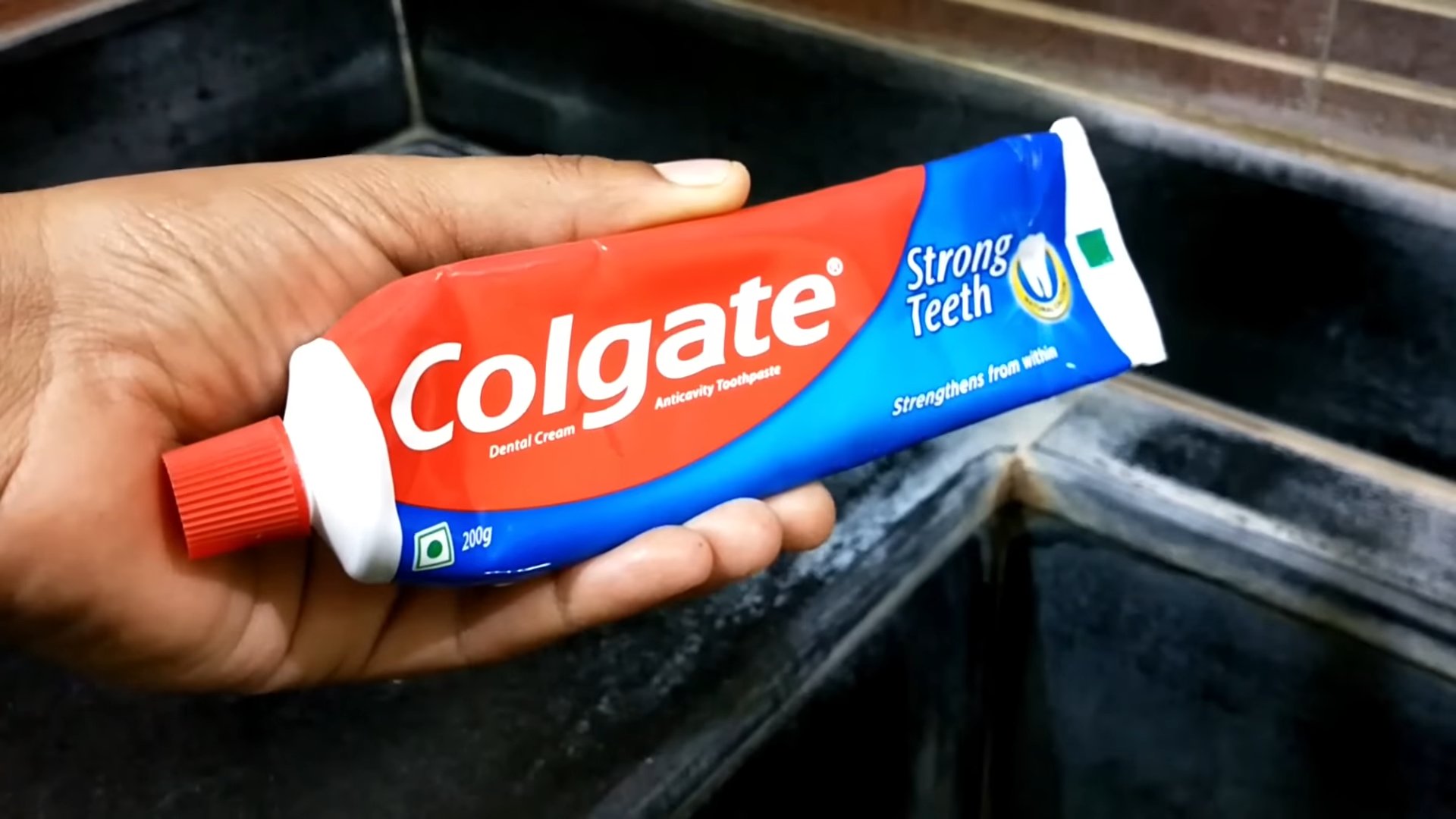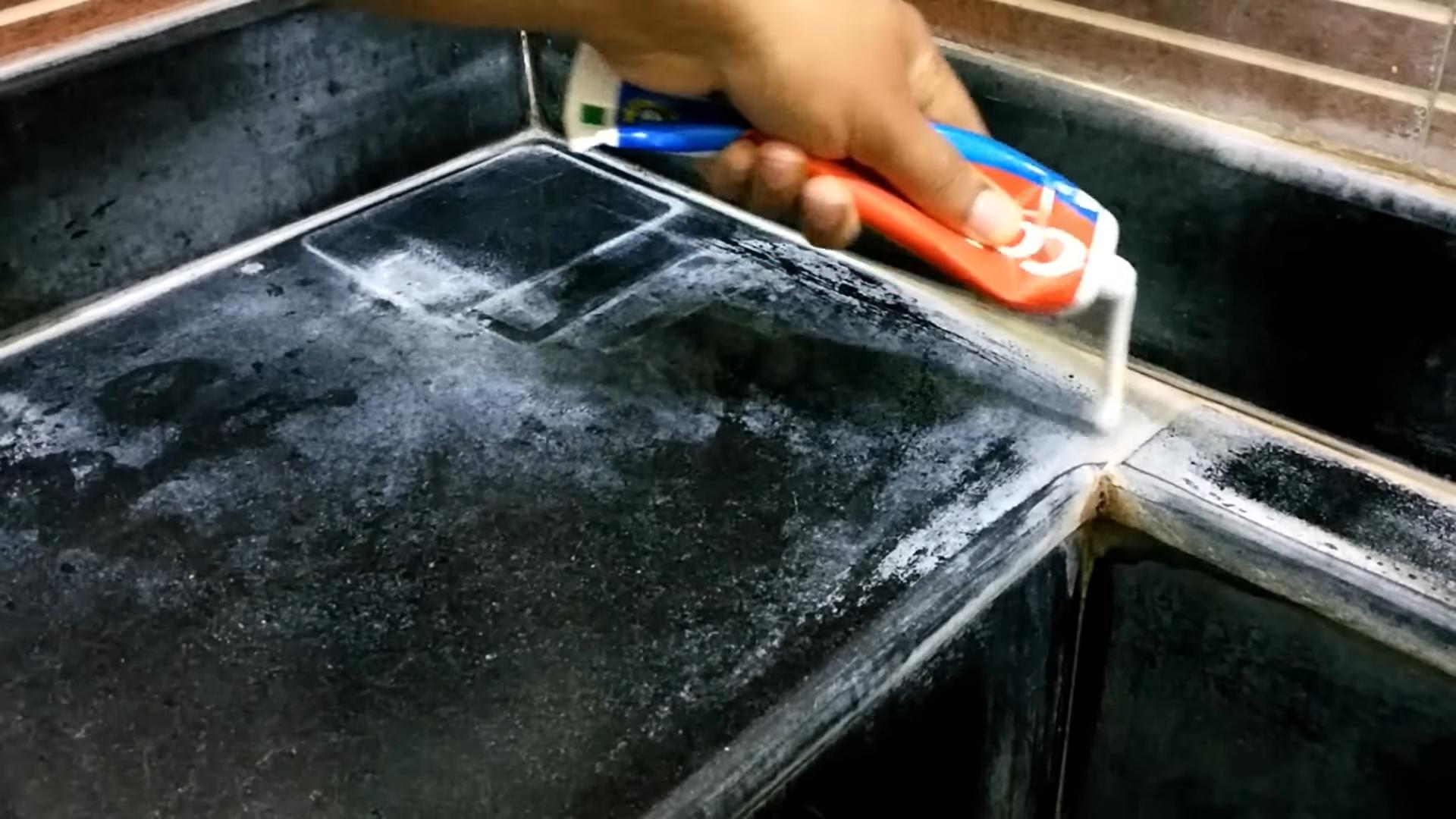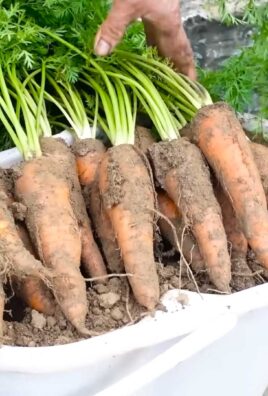DIY Toothpaste Stain Remover: Ever had that sinking feeling when a blob of toothpaste lands on your favorite shirt just before you head out the door? We’ve all been there! It’s a common mishap, but thankfully, it doesn’t have to ruin your day. For generations, people have sought quick and effective solutions to everyday stains, and toothpaste stains are no exception. From grandma’s home remedies to modern stain-fighting products, the quest for a pristine wardrobe is a timeless one.
But what if I told you that you don’t need harsh chemicals or expensive stain removers to tackle this pesky problem? That’s right! This article is packed with simple, effective, and budget-friendly DIY toothpaste stain remover tricks that you can whip up using ingredients you probably already have in your pantry. Why spend money on specialized products when you can harness the power of common household items?
Life is messy, and accidents happen. Knowing how to quickly and easily remove toothpaste stains can save you time, money, and a whole lot of frustration. So, let’s dive in and discover the secrets to banishing those pesky white marks for good! Get ready to say goodbye to toothpaste stains and hello to stain-free confidence!

DIY Toothpaste Stain Remover: A Simple Guide
Okay, so you’ve got toothpaste on your favorite shirt, your dark jeans, or even the bathroom mirror? Don’t panic! We’ve all been there. That chalky white residue can be a real pain, but thankfully, you don’t need harsh chemicals or expensive stain removers to get rid of it. I’m going to walk you through a few super easy DIY methods using things you probably already have at home. Let’s get started!
Method 1: The Dry Cloth Approach (For Fresh Stains)
This method works best if you catch the toothpaste stain right away, before it has a chance to really set in. It’s quick, simple, and often all you need!
What you’ll need:
* A clean, dry cloth (microfiber works great!)
Step-by-step instructions:
1. Act Fast! The sooner you address the stain, the better. Fresh toothpaste is much easier to remove than dried-on toothpaste.
2. Blot, Don’t Rub: Gently blot the toothpaste stain with the dry cloth. Rubbing can actually spread the stain and push it deeper into the fabric. We want to lift the toothpaste off, not grind it in.
3. Repeat as Needed: Continue blotting with a clean section of the cloth until you’ve removed as much of the toothpaste as possible. You might need to use a few different sections of the cloth.
4. Inspect: Take a close look at the area. If you can still see a faint residue, move on to Method 2 for a deeper clean.
Method 2: Water and a Soft Brush (For Slightly Older Stains)
If the dry cloth method didn’t quite do the trick, or if the stain has been sitting for a little while, a little water and a soft brush can help loosen the toothpaste and lift it away.
What you’ll need:
* A clean, soft-bristled brush (an old toothbrush works perfectly!)
* Clean, lukewarm water
* A clean cloth
Step-by-step instructions:
1. Dampen the Brush: Lightly dampen the bristles of your soft brush with lukewarm water. You don’t want the brush to be soaking wet, just slightly damp.
2. Gently Brush: Using gentle, circular motions, brush the toothpaste stain. Again, avoid rubbing too hard, as this can damage the fabric. Focus on loosening the toothpaste from the fibers.
3. Blot with a Cloth: As you brush, periodically blot the area with a clean cloth to absorb the loosened toothpaste and water.
4. Rinse (If Possible): If the item is washable and the location of the stain allows, rinse the area with lukewarm water to remove any remaining toothpaste residue. If you can’t rinse it directly (like on a couch), use a damp cloth to blot the area clean.
5. Dry: Allow the area to air dry completely. Once dry, inspect for any remaining stain. If the stain persists, move on to Method 3.
Method 3: Vinegar Solution (For Stubborn Stains)
For those really stubborn toothpaste stains that just won’t budge, a vinegar solution can be a lifesaver. Vinegar is a mild acid that can help break down the minerals and other components of toothpaste, making it easier to remove.
What you’ll need:
* White vinegar
* Clean, lukewarm water
* A clean cloth or sponge
* A spray bottle (optional)
Step-by-step instructions:
1. Prepare the Vinegar Solution: Mix equal parts white vinegar and lukewarm water in a bowl or spray bottle. I usually start with about a cup of each.
2. Test in an Inconspicuous Area: Before applying the vinegar solution to the stain, test it on a hidden area of the fabric (like an inside seam or hem) to make sure it doesn’t cause any discoloration or damage. This is especially important for delicate fabrics.
3. Apply the Solution: If the test area looks good, apply the vinegar solution to the toothpaste stain. You can either spray it on directly or dab it on with a clean cloth or sponge.
4. Let it Sit: Allow the vinegar solution to sit on the stain for about 5-10 minutes. This gives the vinegar time to break down the toothpaste.
5. Blot and Rinse: After 5-10 minutes, blot the area with a clean cloth to absorb the vinegar solution and loosened toothpaste. If possible, rinse the area with lukewarm water. If you can’t rinse it directly, use a damp cloth to blot the area clean.
6. Dry: Allow the area to air dry completely. Check for any remaining stain. If the stain is still visible, you can repeat this process or try Method 4.
Method 4: Baking Soda Paste (For Extra Tough Stains)
Baking soda is a mild abrasive that can help scrub away stubborn stains. When combined with water, it forms a paste that can be applied directly to the stain.
What you’ll need:
* Baking soda
* Clean, lukewarm water
* A clean cloth or soft brush
Step-by-step instructions:
1. Make a Paste: Mix baking soda with a small amount of lukewarm water to form a thick paste. You want the consistency to be similar to toothpaste (ironically!).
2. Apply the Paste: Apply the baking soda paste directly to the toothpaste stain, covering it completely.
3. Let it Dry: Allow the paste to dry completely. This may take several hours, depending on the thickness of the paste and the humidity.
4. Brush or Wipe Away: Once the paste is completely dry, use a clean cloth or soft brush to gently brush or wipe away the dried baking soda.
5. Rinse (If Possible): If possible, rinse the area with lukewarm water to remove any remaining baking soda residue. If you can’t rinse it directly, use a damp cloth to blot the area clean.
6. Dry: Allow the area to air dry completely. Inspect for any remaining stain.
Important Considerations for Different Materials
* Delicate Fabrics (Silk, Wool, etc.): Be extra cautious when treating delicate fabrics. Always test any cleaning solution in an inconspicuous area first. Avoid using harsh scrubbing motions. You might want to consider taking the item to a professional cleaner if you’re unsure.
* Dark Fabrics (Jeans, Black Shirts, etc.): Toothpaste stains can be particularly noticeable on dark fabrics. Be sure to rinse thoroughly to prevent any chalky residue from remaining. The vinegar method can be especially helpful for dark fabrics.
* Upholstery (Couches, Chairs, etc.): When cleaning upholstery, avoid getting the fabric too wet. Use a damp cloth or sponge to apply cleaning solutions, and blot frequently to absorb excess moisture.
* Mirrors and Glass: For toothpaste stains on mirrors and glass, a simple wipe with a damp cloth is usually all you need. You can also use a glass cleaner for a streak-free finish.
General Tips and Tricks
* Read the Care Label: Always check the care label on the item before attempting to remove any stain. Follow the manufacturer’s instructions for washing and drying.
* Don’t Use Hot Water: Hot water can set some stains, making them even harder to remove. Always use lukewarm or cold water.
* Be Patient: Stain removal can sometimes take time and effort. Don’t get discouraged if the stain doesn’t come out immediately. Repeat the process or try a different method.
* Prevention is Key: While these methods are effective, the best way to deal with toothpaste stains is to prevent them in the first place. Be careful when brushing your teeth, and try to avoid getting toothpaste on your clothes or other surfaces.
I hope these tips help you conquer those pesky toothpaste stains! Remember to be patient, test your cleaning solutions, and always prioritize the care of your fabrics. Good luck!

Conclusion
So, there you have it! This simple, yet incredibly effective, DIY toothpaste stain remover is a game-changer for anyone who’s ever battled those pesky white marks on dark clothing. Forget expensive stain removers filled with harsh chemicals; this homemade solution is not only budget-friendly but also gentle on your fabrics. The beauty of this method lies in its simplicity – readily available ingredients combined to create a powerful stain-fighting formula.
Why is this a must-try? Because it works! We’ve all been there – rushing out the door, only to notice a glaring toothpaste stain on our favorite black shirt. This DIY trick offers a quick and reliable solution, saving you time, money, and the frustration of dealing with stubborn stains. Plus, it’s a fantastic way to reduce your reliance on commercial stain removers, which often contain harmful chemicals that can damage your clothes and the environment.
Looking for variations? Consider adding a few drops of lemon juice to the mixture for extra stain-fighting power, especially on colored fabrics. However, always test the solution on an inconspicuous area first to ensure it doesn’t cause any discoloration. For particularly stubborn stains, you can also try letting the solution sit on the affected area for a longer period, up to an hour, before blotting it away. Another variation is to use a soft-bristled toothbrush to gently scrub the stain, working the solution into the fabric fibers. Just be careful not to scrub too hard, as this could damage the material.
We wholeheartedly encourage you to give this DIY toothpaste stain remover a try. It’s a quick, easy, and effective way to tackle those annoying stains and keep your clothes looking their best. Once you’ve experienced the magic of this homemade solution, you’ll wonder how you ever lived without it!
Don’t just take our word for it – try it out for yourself! We’re confident that you’ll be amazed by the results. And once you’ve conquered those toothpaste stains, we’d love to hear about your experience. Share your tips, tricks, and success stories in the comments below. Let’s build a community of stain-fighting experts and help each other keep our clothes looking fresh and clean! We are eager to hear your thoughts and any modifications you might have made to the recipe. Your feedback is invaluable in helping us refine and improve this DIY solution for everyone. So, go ahead, give it a shot, and let us know what you think!
Frequently Asked Questions (FAQ)
What kind of toothpaste works best for this DIY stain remover?
Generally, any standard toothpaste will work for this DIY stain remover. However, it’s best to avoid using gel toothpastes, as they may not be as effective at lifting the stain. Opt for a white, non-gel toothpaste for the best results. Toothpastes with whitening agents can sometimes be more effective, but always test on an inconspicuous area first, especially on colored fabrics, to ensure they don’t cause any bleaching or discoloration. Remember, the abrasive properties of the toothpaste are what help to lift the stain, so a paste with a slightly gritty texture is ideal.
Can I use this DIY stain remover on all types of fabrics?
While this DIY stain remover is generally safe for most fabrics, it’s always a good idea to test it on an inconspicuous area first, especially on delicate fabrics like silk or wool. Some fabrics may be more sensitive to the ingredients in the solution, so testing beforehand can prevent any potential damage or discoloration. If you’re unsure about a particular fabric, consult the garment’s care label or consider taking it to a professional cleaner.
How long should I let the solution sit on the stain?
The amount of time you let the solution sit on the stain will depend on the severity of the stain and the type of fabric. For light stains, 5-10 minutes may be sufficient. For more stubborn stains, you can let the solution sit for up to an hour. However, it’s important to check the area periodically to ensure that the solution isn’t causing any discoloration or damage to the fabric. If you notice any adverse effects, rinse the area immediately with cold water.
What if the stain doesn’t come out completely after the first try?
If the stain doesn’t come out completely after the first try, don’t give up! You can repeat the process as needed. For particularly stubborn stains, you can also try using a soft-bristled toothbrush to gently scrub the area, working the solution into the fabric fibers. Just be careful not to scrub too hard, as this could damage the material. You might also consider increasing the concentration of vinegar in the solution, but again, test on an inconspicuous area first.
Can I use this DIY stain remover on dried toothpaste stains?
Yes, you can use this DIY stain remover on dried toothpaste stains. However, it may require a bit more effort to remove the stain completely. Before applying the solution, try gently scraping off any dried toothpaste residue with a dull knife or the edge of a credit card. This will help the solution penetrate the stain more effectively. You may also need to let the solution sit on the stain for a longer period of time and repeat the process several times.
Is this DIY stain remover safe for colored fabrics?
This DIY stain remover is generally safe for colored fabrics, but it’s always a good idea to test it on an inconspicuous area first. The vinegar in the solution can sometimes cause discoloration, especially on delicate or brightly colored fabrics. If you’re concerned about discoloration, you can try using a diluted solution or reducing the amount of vinegar. You can also add a few drops of lemon juice to the mixture for extra stain-fighting power, but again, test on an inconspicuous area first.
How should I store the leftover DIY stain remover?
Since this DIY stain remover is made with natural ingredients, it’s best to use it immediately. However, if you have any leftover solution, you can store it in an airtight container in a cool, dark place for up to a week. Be sure to label the container clearly and shake well before each use. Over time, the solution may lose its effectiveness, so it’s best to make a fresh batch each time you need it.
What are the benefits of using a DIY stain remover over commercial stain removers?
There are several benefits to using a DIY stain remover over commercial stain removers. First, DIY stain removers are often more budget-friendly, as they’re made with readily available and inexpensive ingredients. Second, they’re often gentler on fabrics, as they don’t contain harsh chemicals that can damage or discolor your clothes. Third, they’re more environmentally friendly, as they reduce your reliance on commercial products that often contain harmful chemicals that can pollute the environment. Finally, making your own stain remover allows you to control the ingredients and avoid any potential allergens or irritants.





Leave a Comment